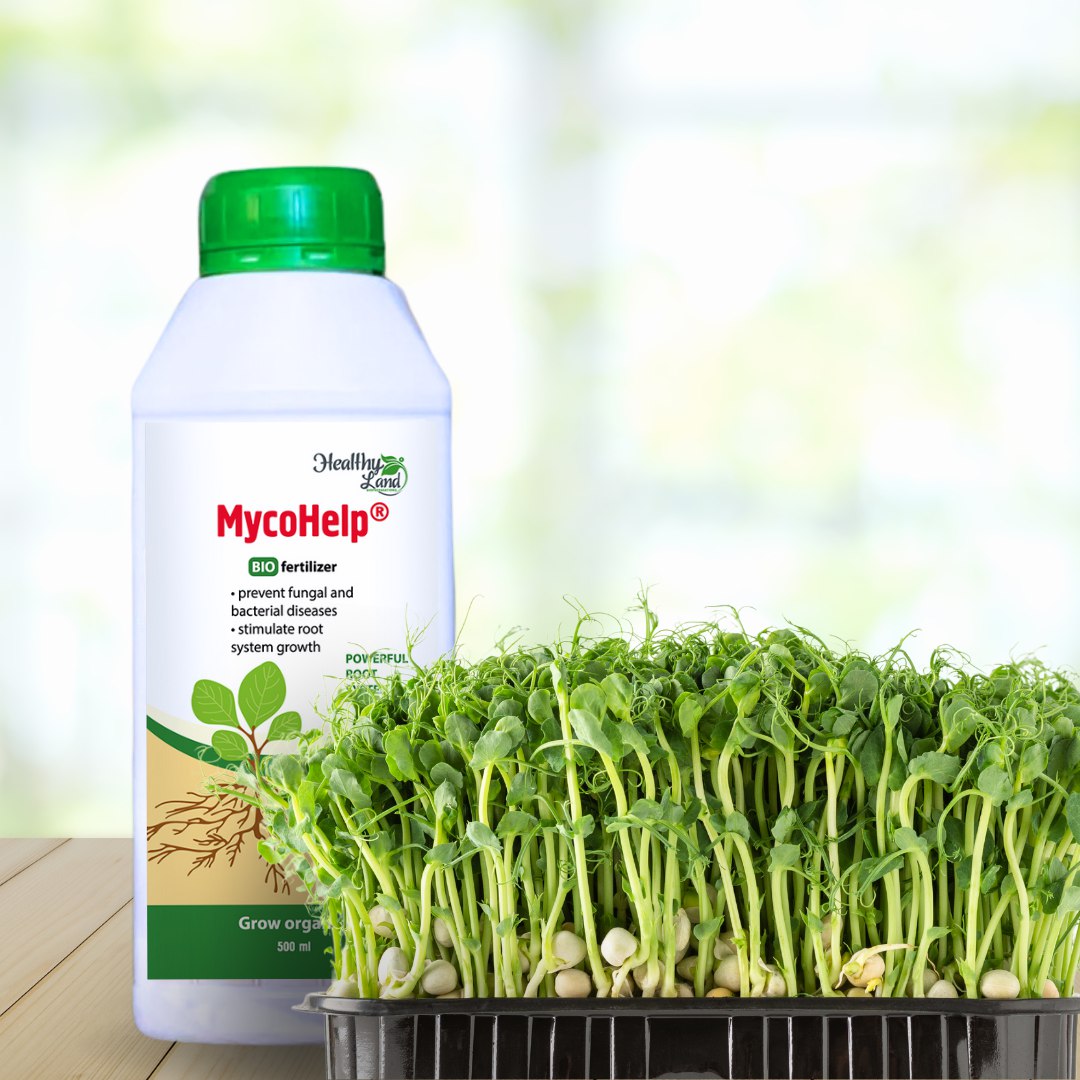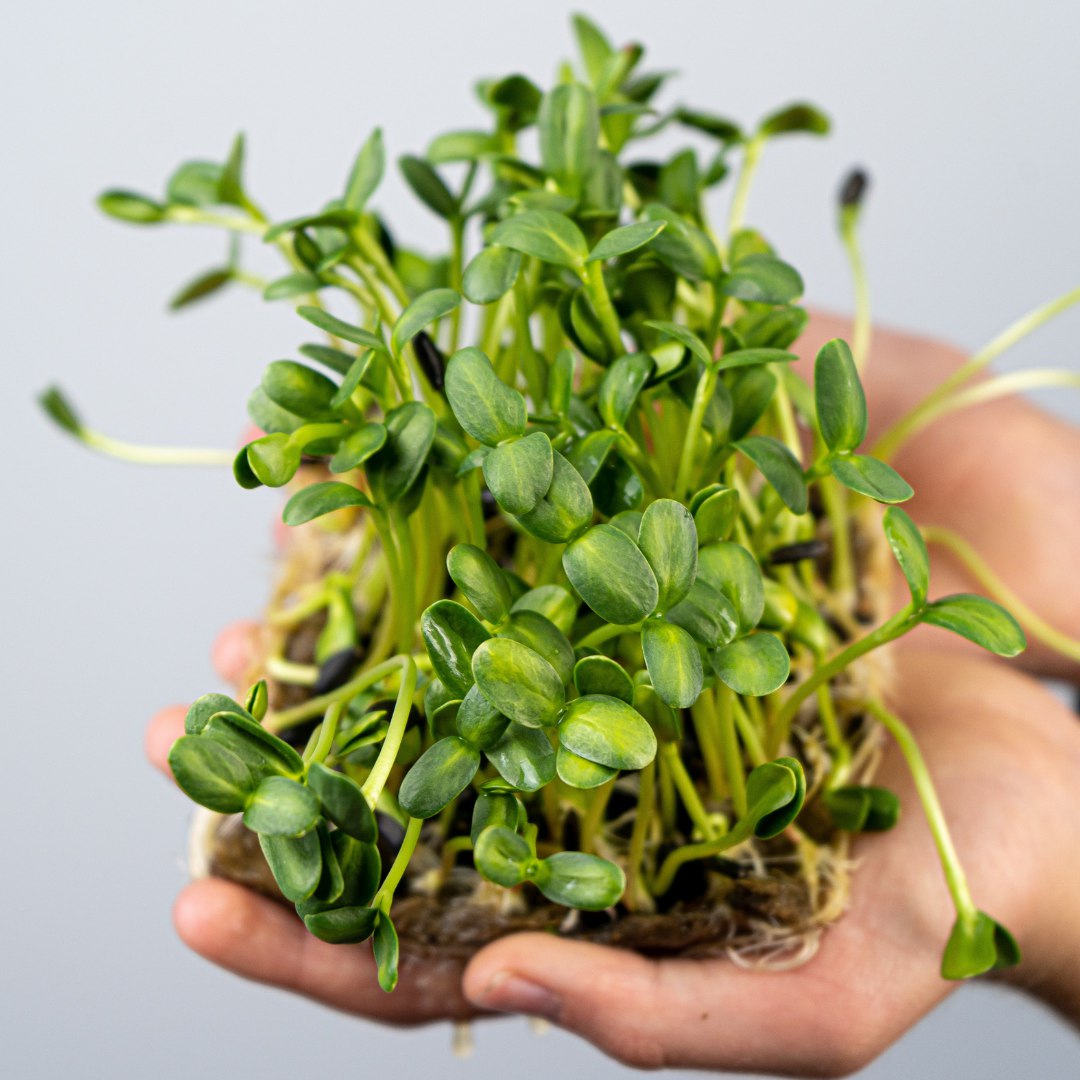Microgreens are young plant sprouts that are grown until the first true leaves form. Growing microgreens at home is easy, and it's a great way to add more fresh, healthy ingredients to your diet. Microgreens will make you feel spring in the middle of winter and give you the necessary vitamins in the pre-harvest period. Microgreens have many beneficial properties, including:
- High content of vitamins and minerals. Seedlings contain a large amount of vitamins A, C, E, K, as well as minerals such as iron, calcium, magnesium and phosphorus.
- Antioxidants. Seedlings contain antioxidants that help protect the organism from damage caused by free radicals.
- Proteins. Seedlings are a good source of protein, which is essential for tissue growth and repair.
Microgreens are suitable for eating at different stages of growth - from the stage of a cracked seed with a root with the first seedling to the stage of thick first leaves that cannot be separated into separate parts. But the seedlings taste best when they are still small and full of the energy for growth that they get from the seed.

Taste characteristics of different plants
The flavor characteristics of microgreens depend on the type of plant from which they are grown. In general, sprouts have a delicate, fresh flavor. They can be used in salads, soups, sauces, smoothies, and other dishes.
Here are some examples of the flavor characteristics of different types of microgreens:
- Broccoli: has a sharp, spicy flavor.
- Radish: has a sharp, spicy flavor.
- Arugula: has a spicy, mustardy flavor.
- Cilantro: has a bright, citrusy flavor.
- Spinach: has a delicate, sweet flavor.
- Radish: sharp, spicy
- Dill: soft, fragrant
- Basil: soft, fresh
- Parsley: soft, herbaceous
- Thyme, sage: soft, spicy
Growing microgreens at home is very easy and doesn't require a lot of work. All you need are seeds, a planting container, soil or substrate, and water.
What should I use to germinate microgreens?
Let's take a closer look at the most popular materials for germination:
- Coconut substrate.
This is an eco-friendly material. It is very easy to use. To prepare a coconut substrate for plants, you just need to soak it in clean, warm water in a 1 to 4 volume ratio, wait 10-20 minutes for the coconut fiber to absorb the liquid, then mix thoroughly and use it.
- Hydroponics
To grow microgreens using the hydroponic method, you need special containers that are sold in specialized stores. You can also use plastic low containers with a removable mesh inside. With this method, plants receive nutrition from water or a nutrient solution.
- Growing on cotton wool or linen mats.
For this method, you will need a shallow container, on the bottom of which we lay a layer of the same cotton wool or rug, water it abundantly with water. Then the seeds are evenly placed on a well-moistened bedding. The main advantage of this method is its convenience, it is not time-consuming, does not require much hassle, and does not leave dirt.
All of these methods of growing microgreens give good germination results, but the coconut substrate remains the best at the moment.
To make the microgreens strong, healthy, and mold-free, the germination material should be treated with the biological product Mycohelp, which contains live bacteria and fungal spores. This biological product is of natural origin and absolutely safe. It will provide mold prevention.
Sow the seeds evenly, slightly moistening the soil to prevent the seeds from drying out, but do not overwater the soil as this can lead to mold growth. Due to the short daylight hours, it is better to place microgreens under a lamp as the plants need a lot of light. If you have a sufficiently bright window sill, this will also be sufficient.

You can use ordinary water for watering. Once a week, add Mycohelp to the watering, which will improve germination and have a positive effect on the vitamin composition. Microgreens will be ready for harvesting about 7-14 days after sowing, and can be used in various dishes, both fresh and cooked. It perfectly adds piquancy and flavor to salads, soups, sauces, sandwiches and other dishes.
Here are some ideas on how to use microgreens:
- Add microgreens to a salad to make it more nutritious and tasty.
- Sprinkle microgreens over soup or sauce to add extra flavor and texture.
- Add microgreens to a sandwich or sandwich to make it healthier and more nutritious.
- Use microgreens as a seasoning for eggs, meat or fish.
 EN
EN PL
PL
